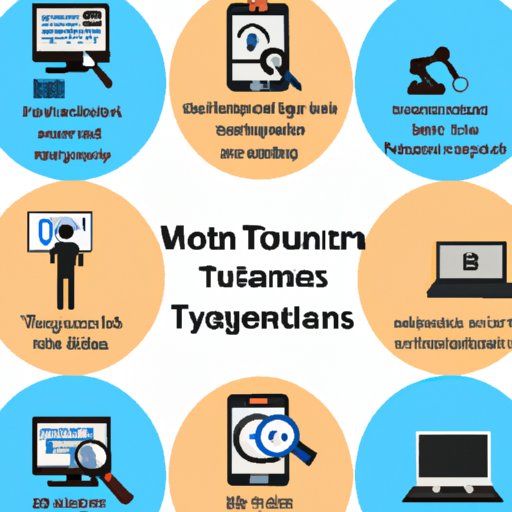Introduction
Automation testing is a software testing technique that uses automation tools to run tests and compare results with expected outcomes. It is used to test the functionality and performance of applications, websites and software. Automation testing has become increasingly popular in recent years due to its ability to reduce costs and improve accuracy and efficiency. But does automation testing require coding? In this article, we will explore this question and provide an in-depth look at the benefits, myths and steps involved with automation testing and coding.
An In-Depth Look at Automation Testing and Whether It Requires Coding
Before we can answer the question of whether automation testing requires coding, we need to understand what coding is. Coding is the process of writing instructions for a computer or other machine to interpret and act on. It involves writing code in a programming language such as Java, Python, C++, and so on. Coding is used to create programs, websites and applications that are used by people all over the world. So, does automation testing require coding? The answer is yes, but not necessarily.
Automation testing does require coding, as it involves writing scripts and programs to automate tests. However, there are some automation testing tools that do not require coding, such as record-and-playback tools. These tools allow users to record their actions on a website or application, and then the tool will automatically generate the code needed to replicate those actions. This makes it much easier to create automated tests without needing to write any code.
Debunking the Myths Surrounding Automation Testing and Coding
There are many misconceptions about automation testing and coding, which can lead to confusion and misunderstanding. One of the most common myths is that automation testing is only used for large projects or complex systems. However, this is not true. Automation testing can be used for any project, regardless of size or complexity. Another misconception is that automation testing is more expensive than manual testing. While it may cost more upfront to set up automation testing, it can save money in the long run by reducing the time spent on manual testing.
Another myth is that automation testing is only useful for regression testing. Regression testing is an important part of the software development process, but automation testing can also be used for other types of testing, such as functional testing, performance testing, and security testing. Finally, many people believe that automation testing is difficult and only for experienced programmers. While it does require some knowledge of programming languages, there are many tools available that make automation testing easier and more accessible to everyone.
A Beginner’s Guide to Automation Testing and Coding
If you are just starting out with automation testing, it is important to understand the steps involved and the technologies used. The first step is to identify the tasks that need to be automated and create test scripts for them. Test scripts are written using a programming language such as Java, Python, or C++. Once the scripts are written, they must be tested to ensure they are working correctly. Once the scripts have been tested, they can be run on the target system to verify the results.
The technologies used in automation testing vary depending on the type of testing being done. For example, if you are performing functional testing, you may need to use a tool such as Selenium or Appium. If you are performing performance testing, you may need to use a tool such as JMeter. Other popular tools used in automation testing include Sauce Labs, BrowserStack, and Ranorex.

Understanding the Difference Between Manual and Automation Testing
It is important to understand the differences between manual and automation testing to determine when each should be used. Manual testing is the process of manually executing tests and verifying the results. It is often used for exploratory testing or to find bugs that automated tests cannot detect. Automation testing, on the other hand, is the process of using tools and scripts to automatically execute tests and verify the results. Automation testing is often used for regression testing or to quickly test a large number of scenarios.
Manual testing has some advantages, such as the ability to perform more thorough tests and to detect more subtle bugs. However, it can be time-consuming and expensive. Automation testing has the advantage of being faster and more cost-effective, as well as being able to run tests repeatedly and consistently. Additionally, it can be used to test a larger number of scenarios in a shorter amount of time. However, automation testing is not always suitable for all types of tests, such as exploratory testing.
Conclusion
In conclusion, automation testing does require coding, as it involves writing scripts and programs to automate tests. However, there are some automation testing tools that do not require coding, such as record-and-playback tools. It is important to understand the steps involved in automation testing, as well as the technologies used and the difference between manual and automation testing. Automation testing can be a valuable tool for improving accuracy and efficiency, but it is not suitable for all types of tests.
By understanding the basics of automation testing and coding, you can begin to explore the possibilities and determine when it is the best option for your project. Automation testing can save time and money, but it is important to weigh the pros and cons carefully before deciding whether or not to use it.
(Note: Is this article not meeting your expectations? Do you have knowledge or insights to share? Unlock new opportunities and expand your reach by joining our authors team. Click Registration to join us and share your expertise with our readers.)
